This page examines one of the more interesting topical areas of Fitzmaurice’s wartime output: his cartoons on American neutrality and the path the United States took to join the war against the central powers in April 1917. Fitzmaurice was not anti-American. In fact, many of his images before, during, and after the war were very complimentary of the United States. He was a proponent of American industry and culture; more than a dozen of his cartoons in 1908 and 1909 called for increased levels of American investment and American immigrants to British Columbia. Fitzmaurice worshiped Theodore Roosevelt. However, like Roosevelt and most English Canadian commentators, Fitzmaurice was strongly critical of American official neutrality between 1914 and 1917 and the foreign policy decisions made by wartime President Woodrow Wilson. This page explores this dissenting view of American neutrality through the images of the best known and most influential opinion maker in the province during the Great War.
THE ARTIST AT WORK
Not surprisingly, the context of the workplace helped to shape the content, meaning, and tone of Fitz’s cartoons and his American themes in particular. Typical of the journeymen artist/illustrators who were on the payrolls of daily newspapers in smaller cities and towns beyond the metropolitan markets of New York, Chicago, and in Canada perhaps Montreal, Fitz was expected to contribute a wide range of drawings, from sport cartoons to images summarizing local theater productions, to advertising illustrations. His work was all over the newspaper, and each image was expected to meet a distinct and very separate purpose. The creative work process for staff cartoonists was also formative. If the newspaper was large enough, there would be several artists inhabiting a separate Art Department. This was typical in large American newspapers. In smaller regional dailies like the Province, there might be one or perhaps two, and they would share office space with sectional editors and reporters. During the war years, Fitzmaurice occupied a corner in a room with the marine reporter, the sports editor, and several itinerant beat reporters. As we have learned from the autobiographies of newspapermen from the period, the workdays of cartoonists, editorial writers, and other daily content providers began early and ended late. Little about the job was predictable. The currency of news and the disruptions of unanticipated events often forced writers and cartoonists to make eleventh hour changes. Sometimes the creative well went dry. Fitzmaurice was well-known for annoying reporters and editors as he frantically searched for last minute inspiration.
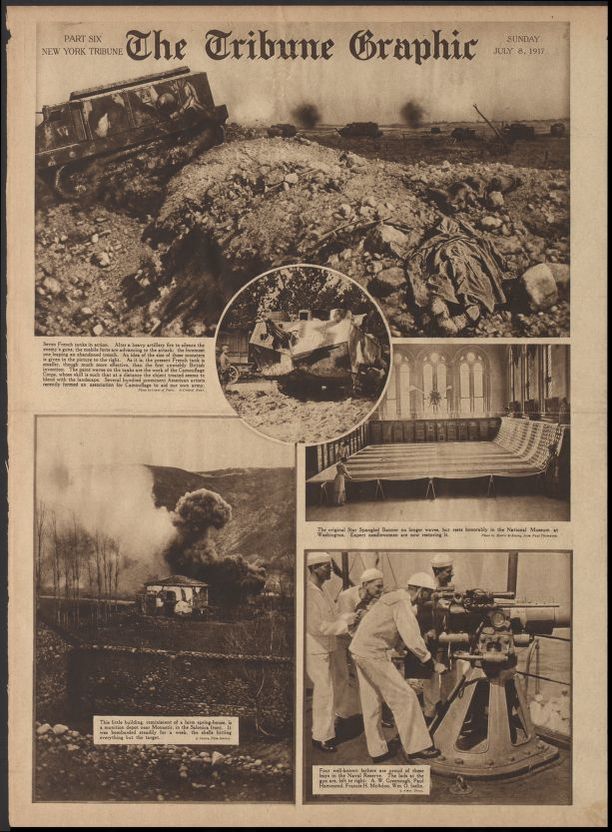
New York Tribune, 8 July1917
Luckily, the war provided plenty of ideas. In particular, American developments both before and after the United States entered the conflict in April 1917 offered Fitzmaurice a host of public issues to work with. Cartoonists educated themselves on such issues by reading the new services available to the newspaper, and these of course shaped the content of their cartoons. Fitz drew his information on international news, including American news, from the emerging wire services such as Reuters’ or the Associated Press or from syndicated newspaper services, which in Fitzmaurice’s time were extensions of the largest newspapers in Britain and the United States. The Province received most of its American news from two New York City-based content providers: the George Matthew Adams Service (GMA) and the New York Tribune Syndicate. The Vancouver paper relied on the Tribune for most of its war news as well. These syndicated news services, which tended to support the Republican Party and leaned towards American support for the Entente, provided the detailed information and opinions around which Fitzmaurice drew his cartoons on the United States during the Great War.
AMERICAN NEUTRALITY
With the outbreak of war in Europe in August 1914, there was no obvious or definitive position for the United States to follow. Certainly a century of American non-involvement had characterized relations with others, but divided alliances at home and murky political consequences made any foreign policy stand difficult and politically risky. German-Americans were an important constituency in American political life and were concentrated in mid-western electoral areas; equally important were Irish-Americans who defined Britain as a greater threat to world peace and democracy than Imperial Germany. Conversely, the Anglo-American tradition based on family ties, shared culture, and economic interconnections was always strong, especially in the large cities on the eastern seaboard. Any President of any party would have struggled to reflect the disparate nature of American opinion at the outset of the war.
The positions of the two American political parties offered no greater clarity. While the Democrats may have leaned more towards isolationism, the party was also peppered with interventionists. To illustrate, Woodrow Wilson’s Secretary of State for the first year of the war was party stalwart and staunch neutralist William Jennings Bryant, only to be replaced in June 1915 by Robert Lansing, described by one historian as “so ardently pro-Entente that he sought to enter the conflict long before April 1917.” For this reason, and because of his distrust of those around him, Wilson made most foreign policy decisions during the war himself. The Republican Party was even more divided. Mid-western Republican Senators, such as Robert M. La Follette, believed Wilson’s brand of neutrality much too pro-British, whereas GOP party leaders Henry Cabot Lodge, Elihu Root, and in particular former president Theodore Roosevelt strongly supported Britain and France and endorsed their moral arguments against German aggression. By the end of 1914, Roosevelt became the most vociferous critic of both Germany and Wilson’s commitment to keep the United States out of the war.
Even more important in shaping public opinion in the United States was the role of the popular press. And here again a variety of opinions on the war flourished. No influence was greater than William Randolph Hearst, whose newspaper chain extended across the country and into the hands of millions of readers daily. From the outset Hearst was opposed to the war generally and American involvement specifically. A self-styled “people’s tribune,” Hearst supported official neutrality and refused to accept what he saw as manipulative British anti-German propaganda stories of German atrocities. This, of course, came from the father of yellow journalism whose newspapers claimed single-handedly to have pushed the United States into the Spanish-American War in 1898. In contrast to the aggressively anti-war position of the Hearst newspaper chain were prominent weeklies like the Outlook and the New Republic which supported the Allies to varying degrees. As historian Justus D. Doenecke reminds us, even Hearst’s newspapers – always cognizant of its readership – gave as much space to pro-Entente articles and often featured well-known British writers and their defence of Allied war aims.
Wilson’s approach to the war was more eclectic. As an academic with wide intellectual influences, Wilson would eventually embrace a “liberal internationalism,” which in part proposed that the world’s problems could be better resolved through engagement than isolation, through international cooperation and the building of global networks, not separation from conflict. Certainly Wilson’s continual effort between 1914 and 1917 to find a negotiated peace contributed to this approach. But at the beginning of the war Wilson had no such grand coherent foreign policy perspective. His academic training was in domestic constitutional history and practice; the war itself would prove to be Wilson’s crash course in international relations. Defining, maintaining and protecting American neutrality along with mediating an end to the war remained the two planks of American foreign policy until April 1917.
When Fitzmaurice returned to Vancouver in July 1916, Woodrow Wilson’s government had struggled to stay out of the war for a year and a half. During that time a string of events had tested the United States’ commitment to neutrality. By September 1914 rumours circulated of German “atrocities” against Belgian civilians, and these were followed by German U-boat attacks on both Allied and neutral shipping. In fact, however, until May 1915 official American anger was directed more towards British interference with American transatlantic trade and freedom of movement. However this changed abruptly with the sinking of the British passenger liner Lusitania by a German U-boat in May 1915, which resulted in the death of over 1100 people including 128 Americans. Public outrage towards Germany followed. Wilson’s government would eventually absorb the Lusitania and other transgressions by the German navy in order to maintain American neutrality, but the Lusitania incident turned American public and state opinion against Germany. In retrospect, the defence of the rights of neutrals, the core of American foreign policy in this period, was a losing battle. The realities of a long and total attritional war that compelled belligerents on a global scale to destroy the capacity of the enemy, not only their ability to produce arms and armies but also to feed their populations, ensured the repeated violation of neutral rights.
In the fall of 1916, Germany began to step up submarine attacks in the North Sea and North Atlantic in an effort to enforce its counter blockade against Britain, which of course included munition and supply shipments from Canada, and strike fear into allied trade by neutrals, particularly the United States. Germany knew it had an effective weapon with the submarine and its increased use was logical in the growing context of total war. Fearfulness, German strategists argued, was the key to victory. But no strategic decisions are without mixed outcomes, and it was the submarine strategy that ultimately drew the United States into the war.
FITZ AND WOODROW WILSON
Fitzmaurice produced about forty cartoons that chronicled the tortured ten months leading up to the American declaration of war on Germany in April 1917. Woodrow Wilson had to maneuver American foreign policy and his own presidency through this complex period that saw the President attempt a delicate and often impossible balance of national interest, moral idealism, and political expediency. One major domestic irritant was the activities and opinions of the German-American community, a theme of Fitzmaurice’s cartoon “Of Course!” (Figure 1) from October 1916. Unlike some cartoonists, Fitzmaurice only produced a handful of wartime images critical of German immigrants, but most of these were directed at the allegiance of German communities, not in Canada, but in the United States. In “Of Course!” an allegorical “German-American” celebrates the success of German submarines in causing havoc in the North Atlantic as a perturbed Uncle Sam looks on. The central worry about allegiance is revealed by the caption, which facetiously quotes an American news report that assures readers that German-Americans would side with the United States in the event of war.
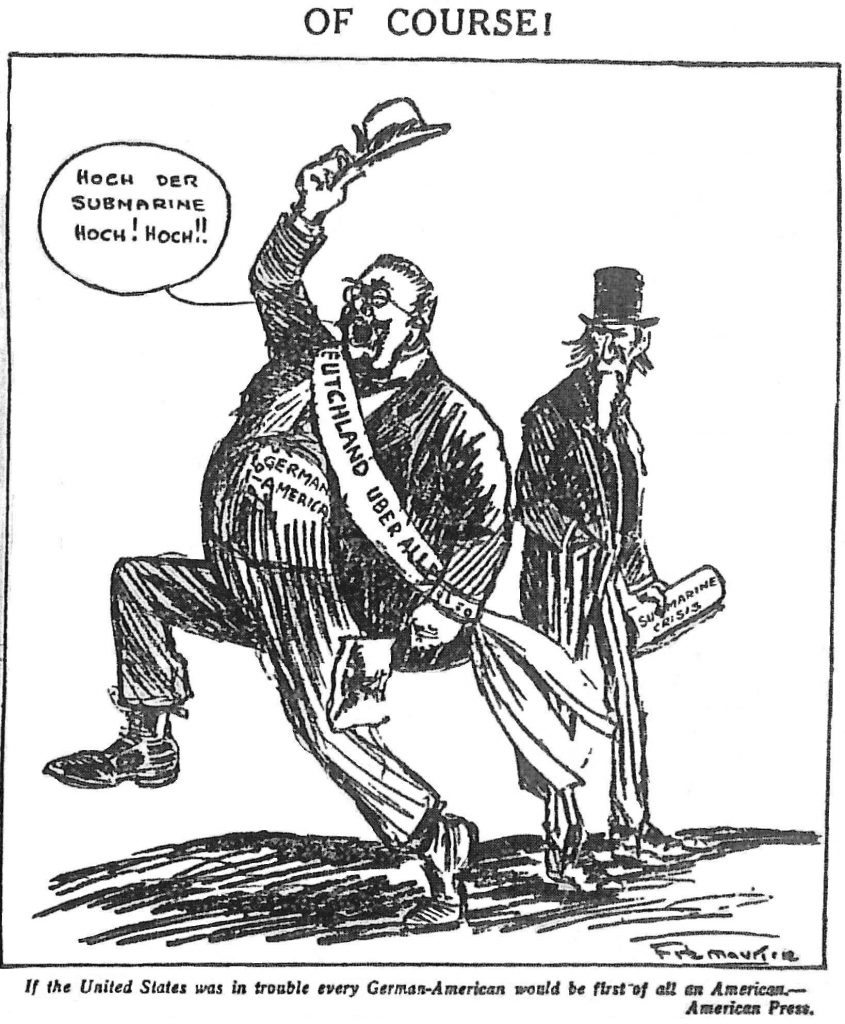
Figure 1: Of Course! (Province 10 October 1916)
There were in fact constant worries about German-American communities and their support for the fatherland. With the weight of almost a tenth of the American population, some German organizations in the United States such as the powerful National German-American Alliance and the major organs of the German language press were outspoken supporters of the Imperial German war effort. As Doenecke notes, “[B]e the matter the conduct of German troops in Belgium or the necessity of unrestricted submarine warfare, German Americans soon became an irritant to the Wilson administration, not to mention the bane of those Americans who were sufficiently pro-British to deem such defenders of the Reich abject traitors.”
If neutrality allowed German Americans in the United States to voice their pro-German sentiments, a freedom that evaporated quickly after April 1917, it also permitted Fitzmaurice the opportunity to play with images that targeted the “enemy within.” In Canada, German immigrants went from mild inclusion to enemy agents overnight; the chill that fell quickly over German Canadians with the passing of the War Measures Act on August 22, 1914 left Canadian cartoonists little opportunity to villainize “enemy aliens.” But Fitzmaurice’s “Of Course!” is critical of more than German Americans. It also reveals a British Columbian frustration with American lawmakers for not cracking down on the enemy within, a mistake that ultimately was the responsibility of the President. It is worth noting that the stereotypical figure Fitzmaurice used to represent German-Americans in “Of Course!” is the same character he used to represent Germany in his anti-German propaganda cartoons. In the context of war, all Germans were the same.
Fitzmaurice also critiqued Wilson’s understanding of the war and his attempts to mediate a negotiated peace between the Allies and the Central Powers. In the cartoon “To Whom It May Concern” (Figure 2), Fitzmaurice comments on one these attempts in September 1916. Wilson and Uncle Sam are seen standing on the American shore gazing across the Atlantic, where they can clearly see British Prime Minister David Lloyd George’s notice of British resolve to fight the war “to the finish” and his rejection of offers to mediate a peace. Uncle Sam states the obvious: “Seems to be posted where you can see it, Woodrow!”
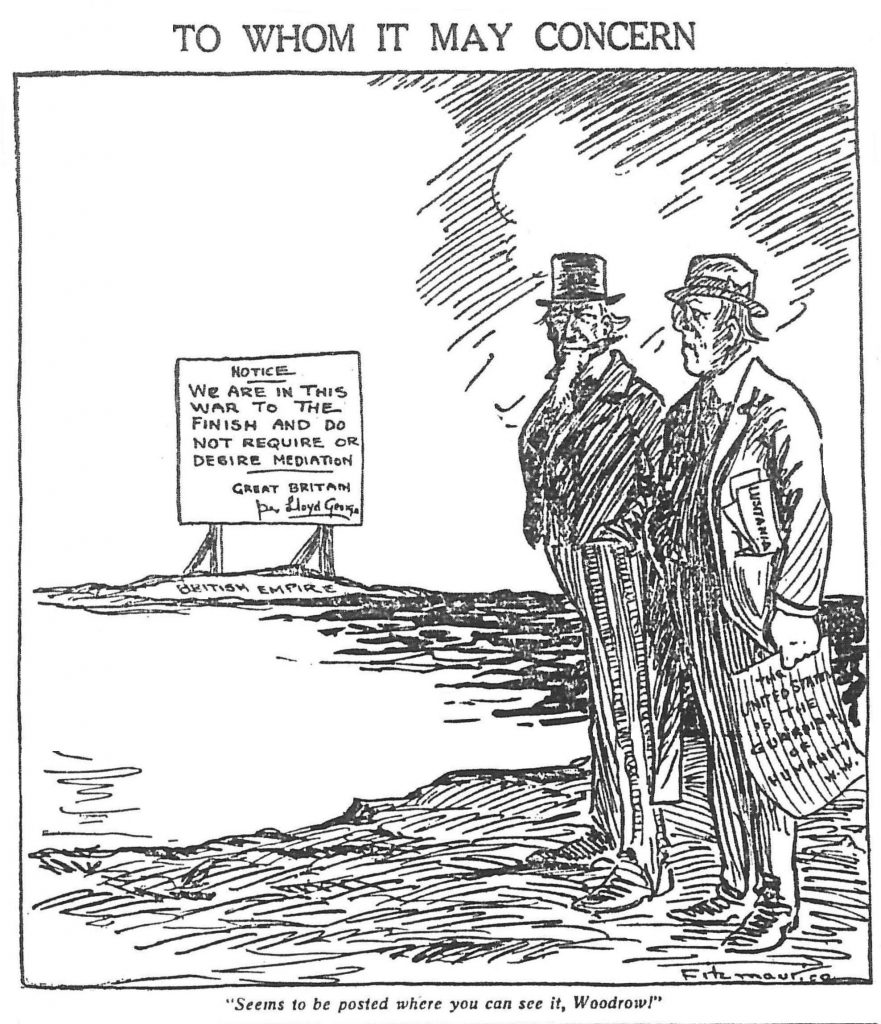
Figure 2: To Whom it May Concern (Province 30 September 1916)
This critical view of the American president’s supposed naïve and short-sighted attempts to mediate an end to the war, against the Allies’ true understanding that only a total military victory would achieve a just end to the conflict, is fundamental to all of Fitzmaurice’s cartoons on the United States before its entry into the war. A negotiated end to the war was seen as a reward to Germany and an abandonment of the hundreds of thousands of Allied soldiers who had already died in the field of battle.
Like many English-Canadian commentators, Fitzmaurice found Wilson’s high moral tone and his characterizing of the United States as the “Guardian of Humanity” self-aggrandizing and tedious, and his “war of words” against German aggression weak and ineffective. The cartoon “The Listening Post” (Figure 3) from October 1916 nicely captures Canadian frustration with Wilson’s diplomatic approach to Germany. Wilson, dressed here as an American foot soldier, waits nervously in the “Neutrality Trench” and asks, “I wonder what they [the Germans forces] are going to put over next?”
The viewer can see the injuries that Wilson, and by association the United States, has already sustained, including the “Submarine blockade” and attacks on the passenger liners the Lusitania and the Arabic. Most important to the image’s rhetorical intent, however, are the President’s tools of inadequacy: the “Protest Bombs (mild);” a large pen, ink bottle, and typewriter; and the small tangle of twigs and barbed wire labelled “US Preparedness.” Nothing short of America’s formal entry into the war on the side of the Allies would satisfy the position portrayed in Fitzmaurice cartoons.
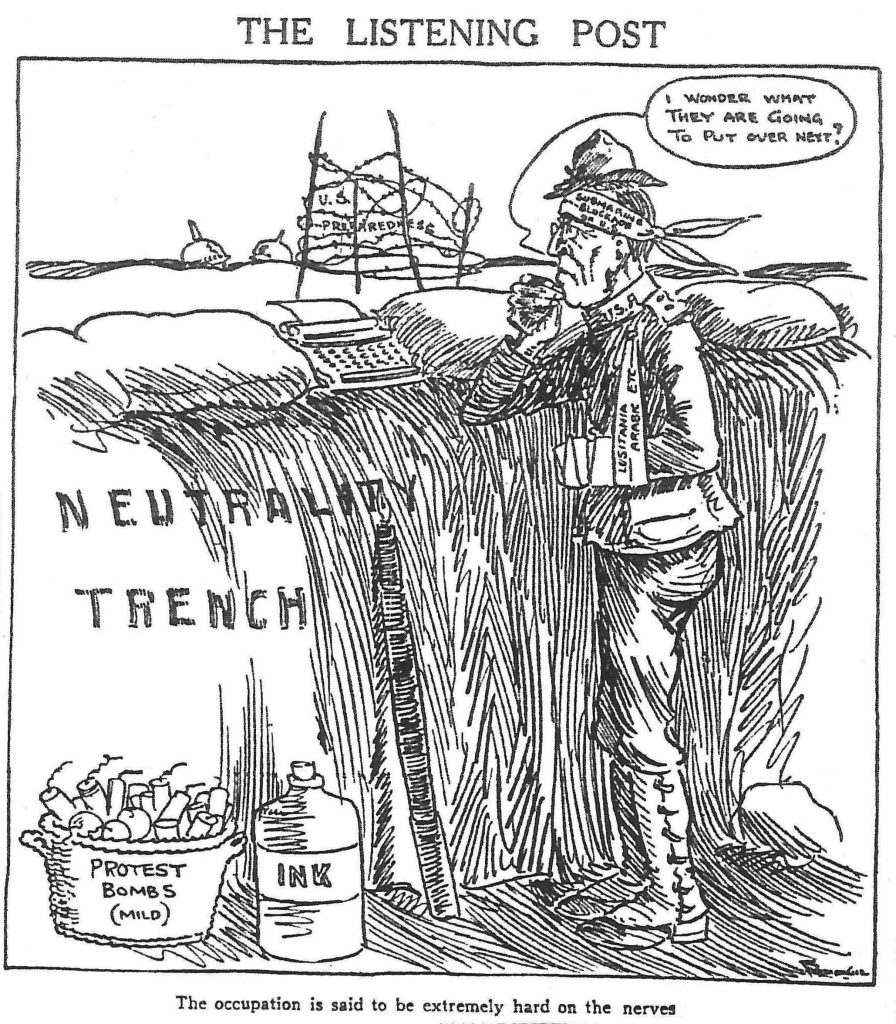
Figure 3: The Listening Post (Province 17 October 1916)
“The Listening Post” also contains meanings that might not have been obvious to readers. The image suggests, as the nature of cartoon reduction often does, that Wilson conducted American foreign policy single-handedly and in a highly personal manner. In fact, with the exception of the occasional assistance of Uncle Sam, all of Fitzmaurice’s images of Wilson during the period of American neutrality had no other officials in the frame. There is a sense of loneliness in these cartoons that might have been accurate. Keeping in mind that the State Department bureaucracy was much smaller than today, historians tell us that Wilson was somewhat isolated as President, that he chose to make decisions himself and often reduced his appointed high-level advisors to mere clerks. The “Professor-President” also was the last chief executive to have written all his own speeches and diplomatic correspondence himself, and he did so upon a small portable typewriter that travelled with him everywhere. One British official who met with Wilson recalled, the President “gave someone instructions to telephone for his typewriter. We conjured up visions of a beautiful American stenographer, but in a short time a messenger appeared, bringing with him a battered typewriter on a tray….” Knowing this, the appearance of Wilson’s typewriter in “The Listening Post” adds authenticity to its message.
Wilson’s quest for a peaceful end to the war was driven by more than idealism. He ran on his record of peaceful mediator in the November 1916 Presidential election. In “Another Blowout” (Figure 4), Fitzmaurice uses a favourite visual metaphor to symbolize an election campaign, the cross-country automobile road race. Published days before the presidential vote, we see Wilson struggling to win a second term with the campaign slogan “He Kept His Country Out Of War.” The viewer can see that a “renewed submarine controversy” threatens to stall his hopes with “only another mile to go.”
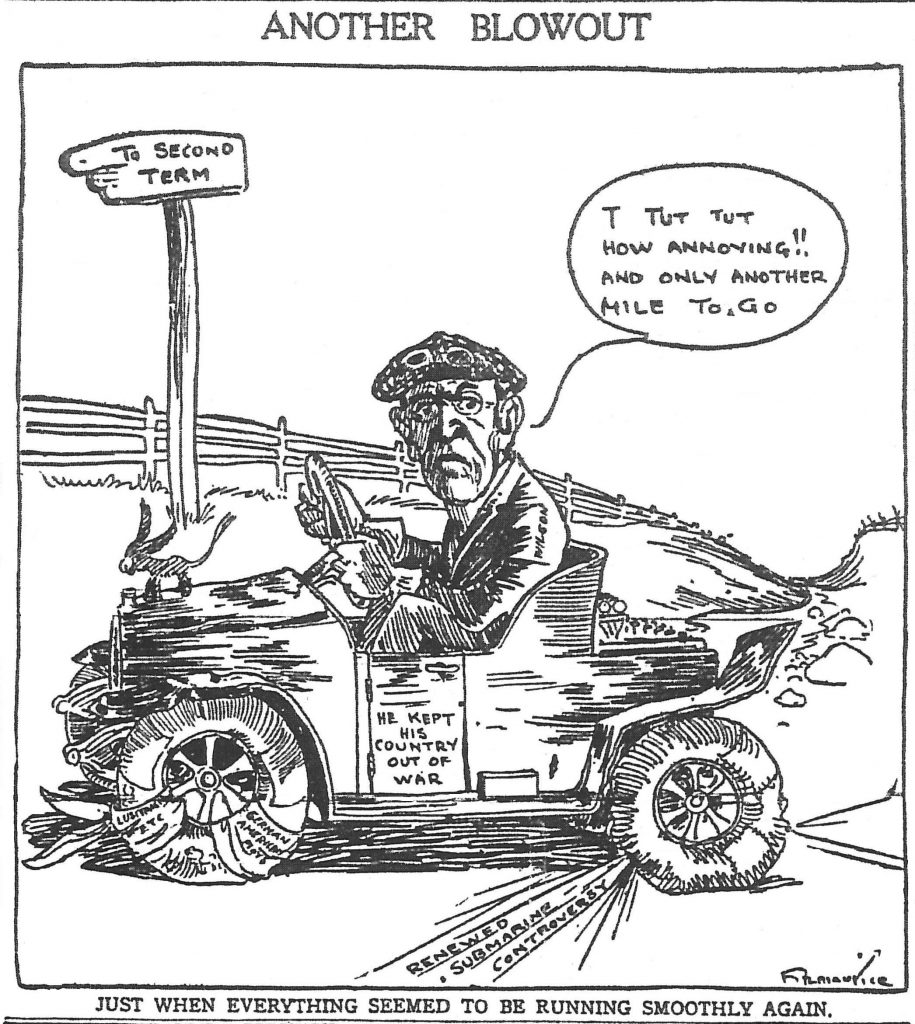
Figure 4: Another Blowout (Province 4 November 1916)
Wilson and the Democratic Party did squeak out a very close election win over a rather divided Republican Party led by Charles E. Hughes. Curiously, while the war was a major issue for many in the country and a central concern for the White House, it was not a decisive topic in the election – neither candidate was confident he could turn the issue to his party’s advantage and both feared its divisive political effects.
A NATION SPEAKS – AND ACTS
After winning a second term in November 1916, Wilson returned to public efforts to mediate a peace, an effort rebuked by both sides. But Germany changed the game as 1917 began. German Chiefs of Staff Hindenburg and Ludendorff had convinced the Kaiser that stepped up unrestricted submarine warfare was the only way to win the war. The action would starve the ability of the Allies to fight the war, and while it would surely bring the United States into the conflict, they argued that victory could be won before the Americans were able to fully mobilize their troops. When unrestricted submarine warfare was made public in January 1917, the pace of events towards American belligerence quickened. The discovery of the notorious Zimmerman telegram in which the German Foreign Secretary, Arthur Zimmerman, encouraged Mexico to declare war on the United States in return for the “lost territories” of Texas, Arizona, and New Mexico, inflamed anti-German sentiment. When Wilson severed diplomatic relations with Germany on February 3 1917, a declaration of war seemed all but inevitable.
In a series of cartoons in February and March 1917, Fitzmaurice portrayed a newly self-assured United States unwilling to be pushed around by Germany threats any longer. The allegorical Uncle Sam was used exclusively to represent American resolve. The cartoon “NO!” (Figure 5) is typical. Published two days after the United States ended diplomatic relations with Germany, Uncle Sam breaks the bonds of “German Dictation” imposed by Germany, represented here by the Kaiser.
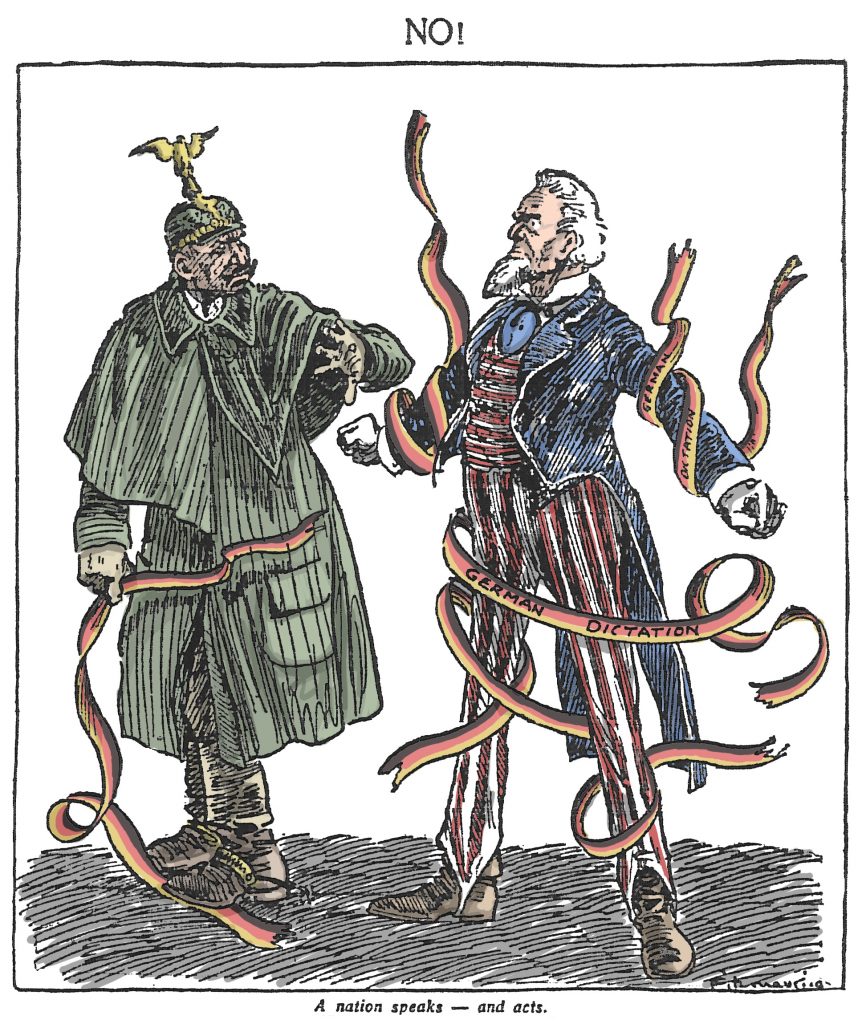
Figure 5: NO! (Province 5 February 1917)
In the caption, “A nation speaks — and acts,” Fitzmaurice used an ironic turn on Wilson’s commitment in 1914 to be a neutral nation in “both word and deed.” On February 7th, the two characters returned to the stage in the cartoon “Scared? No!” Again, Uncle Sam is unaffected by the Kaiser’s fear mongering, in this case unrestricted submarine warfare. Fitzmaurice usually reserved national allegorical figures, such as Uncle Sam, to represent a nation’s will, which was portrayed in these cartoons very sympathetically. Fitzmaurice clearly makes a distinction between the American nation, which he supports wholeheartedly, and its political leaders like Wilson, whom he often found wanting.
In the cartoon “The Last of the Stepping Stones” (Figure 6), published in mid-March 1917, Fitzmaurice chronicled the last few weeks as the United States moved inextricably towards war. Here Uncle Sam has stepped from his initial position of “Watchful Waiting,” through a series of protest notes, past the severing of diplomatic relations, to what was defined as “Armed Neutrality.”
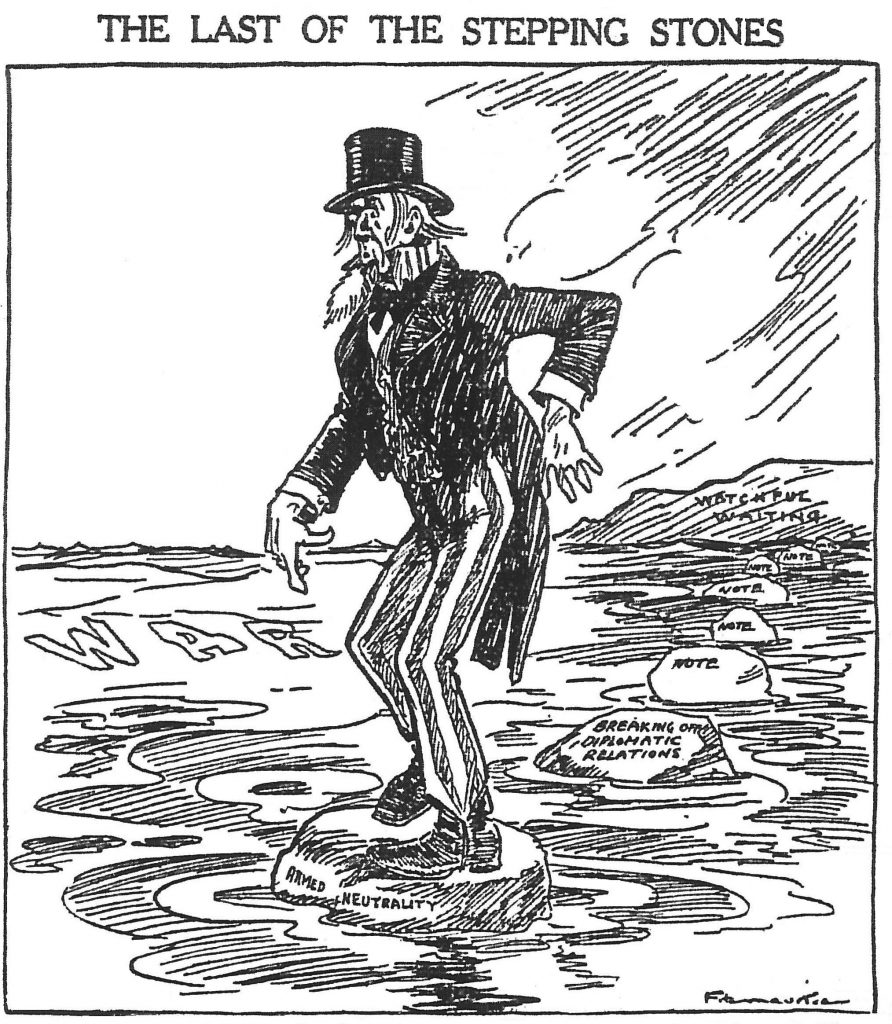
Figure 6: The Last of the Stepping Stones (Province 12 March 1917)
Fitzmaurice was referring here to Washington’s incremental threats to allow its war ships to fire on German submarines on sight and the decision to arm American merchant vessels. On April 6 the final step was taken with the United States’ formal declaration of war against Germany. Fitzmaurice anticipated Wilson’s war speech to Congress on April 2 with the cartoon “Indicted” (Figure 7). Wilson reads a long list of crimes to a sinister yet culpable Kaiser. The following day appeared one of Fitzmaurice’s best remembered political cartoons on the United States during the Great War: “Over the Parapet” (Figure 8). Needing little explanation to readers then or now, Uncle Sam in military kit finally goes over the top of the American neutrality trench.
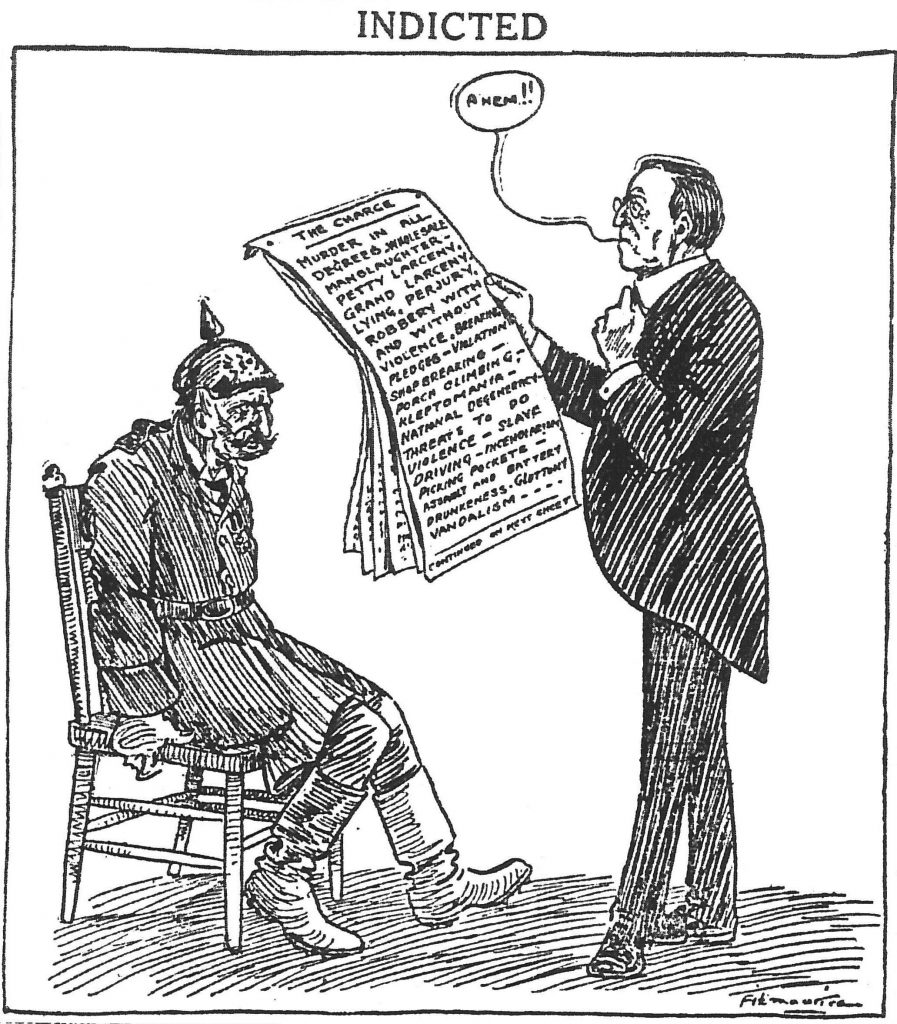
Figure 7: Indicted (Province 2 April 1917
Once the United States had entered the war on the side of the allies, Fitzmaurice found other war issues to present to British Columbian readers. The cast of American characters that had inhabited the Vancouver newspaper from July 1916 to April 1917, including President Woodrow Wilson, Theodore Roosevelt, and Uncle Sam, would only make occasional cameo appearances until the end of the war in November 1918, and most of these were as a part of a group of Allied powers. The Fitzmaurice cartoon “Wilson Was Right” (Figure 9), published a month after the American declaration of war, presents the improved status of a now-belligerent United States. Huddled around Uncle Sam placing orders for war materials and men are the main Entente powers, including “little Belgium” and Russia, the latter which would shortly be engulfed in revolutionary chaos and out of the war by the end of the year. Uncle Sam is now a true “Friend of Humanity” and “Wilson was Right” after all.
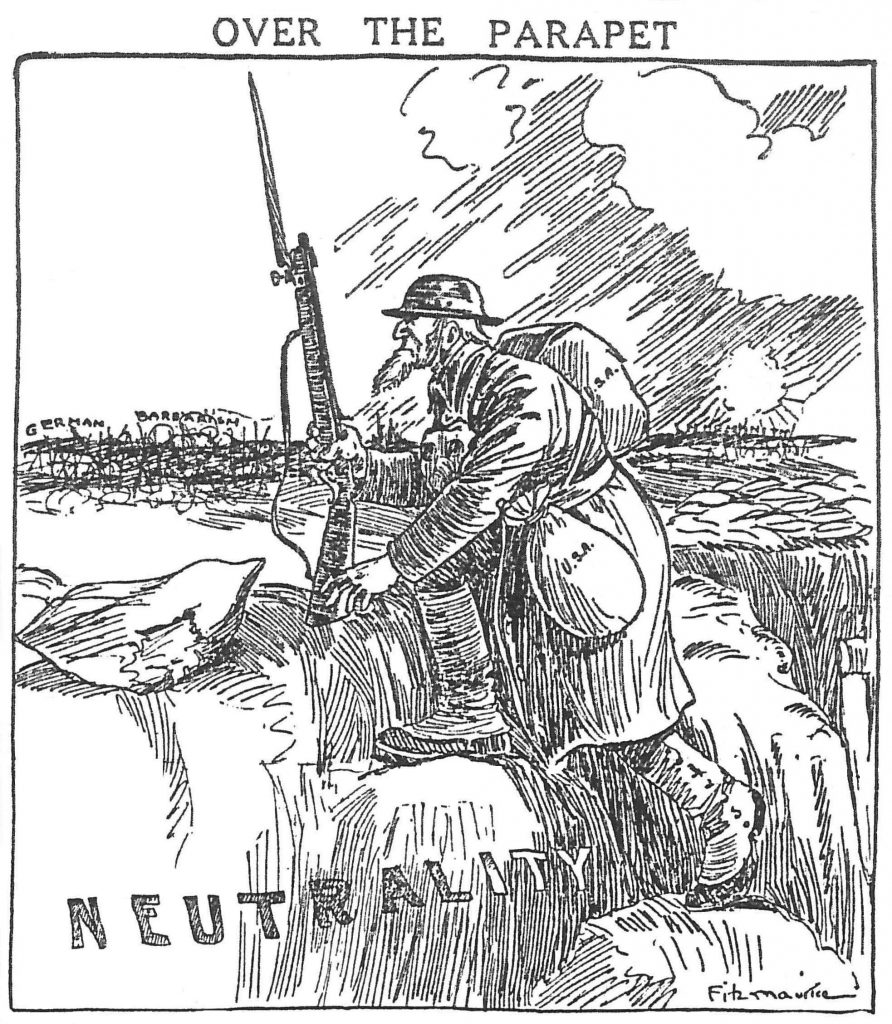
Figure 8: Over the Parapet (Province 5 May 1917)
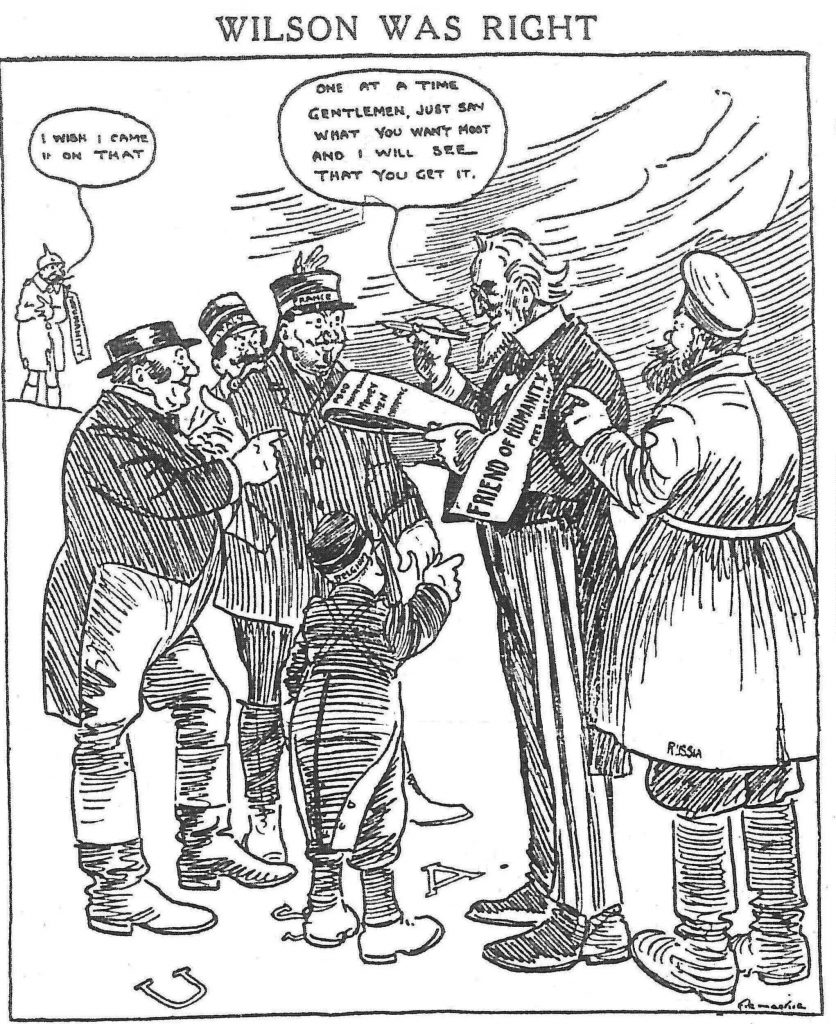
Figure 9: Wilson Was Right (Province 6 May 1917)
CANADIAN-AMERICAN RELATIONS DURING THE WARTIME DIFFERENTIAL
The cartoon “Wilson Was Right” suggests that ‘all’s well that ends well.’ But that was not the case. Most British Columbians were appreciative of the American decision to join the war effort, and later acknowledged the crucial role of the United States played in the final victory. However, the real, and lasting, frustration that sometimes turned to anger towards the United States during the years of neutrality was well captured by Fitzmaurice’s images. This hostility would continue to be fed after April 1917 with the penetration into Canada of American war propaganda, particularly war films, which seemed to suggest the United States single-handedly winning the war in Europe. Political historian Stephane Roussel writes:
As for the Canadians, they considered America’s crusade for democracy as having been far too slow getting launched, especially coming as it did in the wake of numerous displays of friendship between Washington and Berlin. Added to this was the recognition that Canadians had paid a price in blood on Europe’s battlefields far exceeding, relatively, that made by the Americans. The result was that in the immediate aftermath of the war there was much ill-will directed by Canadians southward, a mood not lightened by Hollywood films portraying the Americans as having won the war nearly single-handedly.
Historians from both Canada and the United States normally use the term “American Neutrality” to encapsulate the two and a half years from August 1914 to April 1917. From the perspective of Canadian-American relations, however, we might consider a descriptor that better sums up these distinctly important years. This period of “wartime differential” saw two close neighbours, already involved in a widening range of economic and cultural interactions, suddenly take opposite and emotionally-charged positions on the war. The effects were profound. One of those impacts can be read in the Fitzmaurice images reviewed here. All of Fitzmaurice’s cartoons rejected American neutrality outright as misguided and ignorant of the real threat posed by Germany. If you’re not with us, Fitz declared, you’re against us. Neutrality was not a legitimate position within the Allies’ moral universe by 1916. And Fitz’s images unquestionably supported that. The depth to which Canadians felt American betrayal is revealed in Fitzmaurice’s use of the same rhetorical devices to condemn both Germany and the United States. For instance, the similarities in how Woodrow Wilson and Kaiser Wilhelm were presented in these cartoons are striking. Both are seen as out-of-step with their nation’s collective interests and national will. In dozens of separate images the two leaders are placed in comic situations that reveal the illegitimacy of their leadership and governments. In the end, German militarism and American pacifism were characterized as two sides of the same unwanted coin.
Political positions aside, the period of wartime differential also included the formative penetration of American material and cultural products, forms, and practices into Canada during the war. Some of these welcomed American influences were actually encouraged by the wartime differential itself. As the war dragged on and the sacrifices made by Canadian young men overseas became painfully obvious, a prohibition on pleasure and frivolous amusement took hold on the Canadian home front. It simply became wrong to seek the luxuries of pleasure while the boys in France and Belgium were making the final sacrifice. As a result, everything from economic gain to cultural events had to be legitimated in terms of assisting the war effort. For instance, organized sport – both amateur and professional – struggled to recast itself during the war as “patriotic sports.” Other entertainment forms followed suit. However, imported American products and practices continued to enter Canada with little alteration and almost no direct reference to the war. In effect, then, no prohibition was imposed on American imports; Canadians were happy to live vicariously outside the limits of wartime conditions by purchasing American automobiles, watching frivolous American moving pictures or circuit vaudeville shows, or avidly following the lives of American baseball stars in the sport sections of their newspapers. So, while the wartime differential allowed Canadians the opportunity to condemn the United States for its misguided neutrality, it also encouraged the occasional escape from the dark atmosphere of wartime restrictions and personal loss for the Culture American. The complicated relationship with the United States was fueled by the Great War.